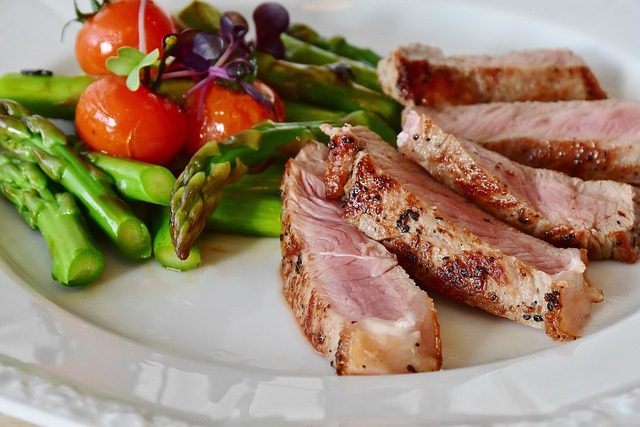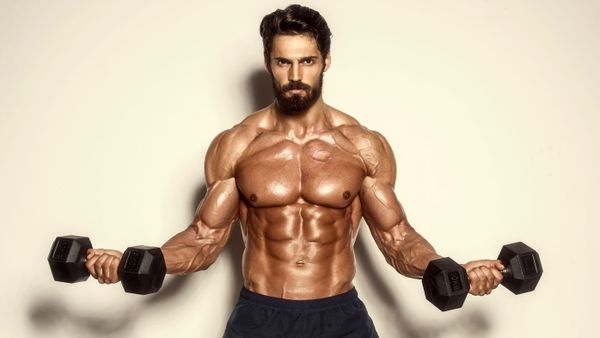Calories Intake When Bulking Or Cutting.
You will need to make some necessary changes to your calorie intake when bulking or cutting. Such cycles play different roles in what you wish to accomplish with your body. In a bulking cycle, you are going to consume two or three times more calories than you normally would. The food is going to be high in protein and help generate fuel for your workout sessions.
In a cutting cycle, the calorie intake is drastically reduced. This is to allow you to cut body fat. However, you will need to be very selective with what you do consume in order to have enough energy to push forward. You also have to avoid becoming dehydrated. Understanding what to do with calorie changes in both of these cycles is very important. You need a solid plan for your meals and you must prepare in advance.

Bulking Cycle
With a bulking cycle, you are going to create a surplus of extra calories. However, this doesn’t mean you sit around and eat junk all day! You will need to avoid foods high in sugar and processed foods. You will need to eat every 3 to 4 hours to keep your energy levels high and to avoid your body storing what you consume as fat.
If you aren’t familiar with NEAT, it stands for Non-Exercise Activity Thermogenesis. This is additional activities the body takes part in that burns calories. Often, a person isn’t even thinking about them. For example, when they are walking or when they fidget as they are sitting down. In a bulking cycle, the extra food is necessary in order for you to push hard and to complete those sessions.
You may be working out twice per day, and you need to keep your fuel levels high enough. Food that is high in protein will promote the growth of lean muscle mass. It is also going to be burned during your movements rather than the body storing it for later.
With a bulking cycle, you must engage in enough physical movement every single day of the cycle that you are going to successfully burn off the additional calories you consume. This is why your diet plan and your exercise plan have to be carefully formulated and calculated.
How much should you Consume in a Bulking Cycle?
There is no concrete answer when it comes to how much an individual should consume each day during a bulking cycle. This is because each person is difference. Metabolism, physical activity, and other factors will all play a role in those numbers. It is very important to work with an expert or to do your homework and come up with those numbers. Don’t dive into the cycle and try to figure it out as you go. A solid game plan is essential for success!
Typically, a person will need to double their intake, or even triple it! However, there are those that can get by with just an additional 400 or 500 calories. It all depends on how vulnerable your body is when it comes to storing fat. The amount of body fat you have as you begin your cycle is also something to take a look at.
Amount of Lean Muscle Mass Created
How much weight are you planning to gain through that bulking cycle? You may already have substantial muscle, and be looking for gains between 5 pounds and 10 pounds. If you don’t have much muscle at all, you may be pushing towards a goal of 20 pounds of lean muscle mass for the duration of the bulking cycle.
Those who are new to creating muscle mass should strive for a goal of about 3 pounds per month. For those that have advanced experience with bodybuilding, and they already have muscle, about 5 to 8 pounds per month is a good target. Women tend to create muscle and burn body fast at a slower rate than males. This is due to differences in body chemistry.
As a result, women new to creating muscle mass should shoot for about 2 pounds per month. Women who are more advanced with such a process should strive for 4 pounds per month of lean muscle tissue. Don’t worry though if your outcome isn’t right on with these numbers. As long as you are seeing gains each week and getting stronger, that should encourage you to constitute with the process.
Cutting Cycle
With a cutting cycle, you are going to take in drastically less calories in order to create a daily deficit. You will still be working out but not as intensely, and your body is going to need fuel for energy. The purpose of the cutting cycle is to further reduce the remaining body fat. To do this, you have to trick the body into using the fat reserves to make up for the lack of calories.
Typically, the body would use the muscles for fuel and energy and store the body fat. With the use of various supplements such as SARMs or anabolic steroids, it is possible to reduce the body fat while preserving the muscles that were gained in the bulking cycle. The body is going to change in regard to the metabolism and how it processes what you take in during a cutting cycle.
Changes to Metabolic Rate
While you are cutting, the metabolic rate is going to be affected and changed. As a result, you are going to lose less overall weight. The less body fat you have, the harder it is going to become to eliminate it. This is why someone who is obese and cuts calories is going to drop significantly more weight than someone who only has a small amount of extra pounds to shed.
Protein intake is going to be lower with a cutting cycle than with a bulking cycle. This is because you don’t need all of that extra intake to use as energy. Yet your meals should offer food that helps you to stay full for longer periods of time. You don’t want to feel like you are starving in a cutting cycle. It can be hard to focus on anything else when you feel hungry all the time.
The use of various supplements during a cutting cycle can help you to keep your energy level high. That may prove to be difficult to do on your own when you are taking in far less calories than before. Make sure you plan your meals well so you can don’t overeat. You may be tempted to sneak food or to binge in a cutting cycle, but that isn’t going to help you achieve your goal of burning body fat.
These changes to your metabolic rate are going to result in losing weight and losing body fat during the cutting cycle. It will also mean you don’t require as much energy as you did before, so you can still engage in various types of workout sessions. The changes are referred to as Adaptive Thermogenesis, or AT.
During AT, you will notice a drop in your NEAT activities. This is because the body has less fuel. It is naturally going to do what it can to conserve that fuel, and only expend energy on what is a necessary movement.
Cardio Exercise
It is important to take part in cardio workouts several times per week during a cutting cycle. The time should range from 30 minutes to 60 minutes every other day. Lifting is also going to help you maintain the muscle mass and cut body fat. Make sure you are involved in a lifting program that benefits the entire body, not just targeted areas.

How many Calories to Consume?
Just like calorie intake details in a bulking cycle, everyone is different. You have to carefully calculate what your intake should be for your cutting cycle. Many athletes and bodybuilders find that if they drop too drastically all at once, they suffer from extreme hunger and fatigue. A better option is to cut back, and then to cut another 15% to 20% when you are several weeks into the cutting cycle.
Women naturally require fewer calorie than males in order to thrive, so they tend to have an easier time overall with a cutting cycle. Most females range between 1,1150 and 1,300 calories per day. However, women also have a higher risk of eating disorders and thyroid problems due to cutting back on calories too much.
Women also have to take into account changes in weight due to water retention during a menstrual cycle. Don’t weigh yourself every day and don’t be too strict with the diet on days when you feel you really do need to consume a bit more in order to feel your best during a cutting cycle.
Response #1
I really worked hard today, especially my legs! I have been doing what I can to eat more but it is a challenge at times. Thinking it may be time for a bit of caffeine to help with digesting all of it? I learned a great deal about how the digestion is very important in the cycles and so is calorie intake for my specific body.
I used to skip meals, and then eat larger ones later in the day. Now I am eating more meals each day so my body always has something for fuel. This seems to be helping me to regulate energy levels and do better with workouts. I don’t have those random spikes of energy anymore or the dips where I feel the fatigue and can’t push forward.
Response 2:
I would assume the difference in intake of food amounts over a 24 hour period isn’t going to matter much in terms of the thermic effect as long as calories and macros remain the same? Eating more often is very important, and something to practice daily when you are taking part in cycles. For me, it was impossible during bulking to consume as many calories as I needed eating twice a day. When I started eating six smaller meals a day though, I could get it done.









